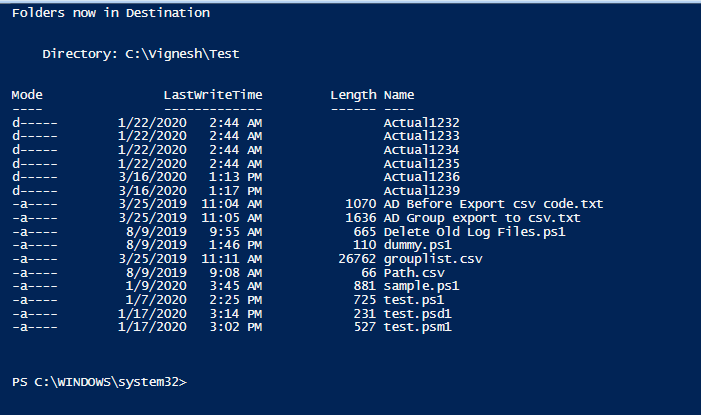
The rest of it works sometimes, but sometimes you might try to hit a button but the touch registers a few i. Bottom 1/2" or so of the screen never registers a touch. Hi, We have a touch screen on a CNC machine on our production floor that's causing issues. Hey all,Before I get into the problem at hand, I realize this may be a multi phase problem and the document side of it may only be resolving a specific portion of the problem, but I have to start somewhere.The issue to cut off the fat and make it as simpl.
#MASS RENAME FILES USING POWERSHELL HOW TO#
Documentation for how to create the new name would be specific to whatever it is you. If you mean documentation for bulk file renaming, there isn't any because it's not really a discrete topic, other than the basic idea of feeding the filenames to a loop using Rename-Item. Major Difference between vSphere 6.7 and 7.0 f00bar Documentation for what aspect This answer covers several topics.

If you are using Get-ChildItem in PSv2, you can filter out only files using Where-Object and the boolean property "PSIsContainer". Remember that you can always add the flag "-Recursive" to Get-ChildItem to replace recursively. This is exactly what I needed Now that I have the command, I will be able to bulk rename these files without having to individually rename them before I can use them. They are the same (dir, ls and gci are aliases to Get-ChildItem). As you can see, 8 characters have been stripped from every filename. I will be using Get-ChildItem and one of its aliases: "dir" (also "ls" and "gci").
#MASS RENAME FILES USING POWERSHELL CODE#
Some of the things will have to be done differently with PowerShell version 2 and earlier, but the Rename-Item and code in the -NewName parameter itself is compatible with v2. The code and examples in this article work with PowerShell version 3 and up (Windows Management Framework 3.0), unless otherwise stated. In this article I extensively demonstrate how to rename files in PowerShell, using custom criteria with if statements, regexes, splitting, string methods like ToUpper() for upper-casing and ToLower() for lower-casing, inserting stuff into specific places in a file name, and removing certain parts of a file name.Īs I wrote this article, I realized it's really as much about string manipulation as renaming files per se.



 0 kommentar(er)
0 kommentar(er)
